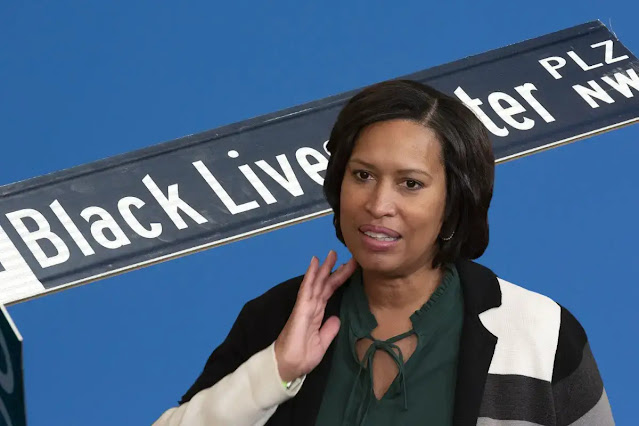In a blow that has caused a great deal of frustration and disappointment among activists and residents, Washington D.C.'s iconic Black Lives Matter Plaza will be replaced after Mayor Muriel Bowser allowed Republicans to stack the deck against her. The resolute two-block stretch on 16th Street NW, a defiant statement against racial injustice, could soon risk becoming just a historical footnote.
First painted in June 2020 in the wake of nationwide protests against police brutality, the bright yellow "Black Lives Matter" mural became an unmistakable display of defiance and solidarity. It is a place where thousands came together to call for justice. Bowser, who previously renamed the area "Black Lives Matter Plaza NW," now seems to be backpedaling under political pressure.
Republicans are back in charge of Congress and the White House, increasing their leverage over the district. At the heart of this controversy is Rep. Andrew Clyde (R-Ga.), whose ultimatum was to rename the plaza "Liberty Plaza" and paint over the mural or lose vital federal highway funds, forcing Bowser into a difficult position. Rather than outright resistance, the mayor chose a pivot, announcing on March 4 that the plaza would be part of a new artistic initiative marking America's 250th birthday.
We have been thinking about the evolution of the Black Lives Matter Plaza for some time, and the plaza will complement D.C.'s America 250 mural project. We look forward to inviting students and artists to create new murals in all eight wards. The mural inspired millions and helped our city through a harrowing time, but we can't be distracted now by congressional meddling that serves no purpose. Our top priority has to be the devastating impacts of the federal job cuts. We are focused on economic growth, public safety, and supporting our residents impacted by these cuts," Bowser said.
For many people, this explanation falls flat. Replacing it with a broader, non-specific art project, critics say, seems to them like a politically convenient way to scrub from the record a hard-fought message. Just as Clyde's threats came to the forefront, the timing with which Bowser's announcement was made indicates more of a forced compromise than a genuine city-led initiative.
The Black Lives Matter movement views this as another instance of history rewritten to soothe those disturbed by its realities. The plaza became a symbol of resilience, a place for people to march, grieve, and demand accountability. For residents and activists in D.C., the question remains: If a mural was a vehicle to inspire millions and help heal a city, why is it being prioritized for removal? And what does that say about how political coercion trumps civic expression?
As the question of Black Lives Matter Plaza remains in the air, one thing is sure: a cursory coat of paint doesn't diminish the movement for justice and equity. It persists in the voices of those unwilling to let history be erased.
Advertisement
Black Lives Matter Plaza Faces Erasure as D.C. Mayor Bows to GOP Pressure
byHypeHub Magazine
March 05, 2025
Search
sponsor

Weekly Playlist
Popular Posts
(23).jpg)
Satanic Panic serves noir-pop perfection with ‘Sweet as a Pie"
November 06, 2025

DaCurz ignites a feel-good vibe with new single “Irugbon”
October 30, 2025
.png)
Rockvyn sparks a rebellion with electrifying new single “Lovgorithm”
October 03, 2025
Categories
Featured Image

Most Popular

Voodoo Wiseguys unleash their electrifying new single, "Voodoo Wiseguys"
February 05, 2025
XHY Releasae Chill Vibes with “Copacetic”
December 27, 2024

Jon Beckwith Moore unleashes soulful liberation with "Free Now"
February 03, 2025
Submit Your Music To Us
Menu Footer Widget
Crafted with by TemplatesYard | Distributed by HypeHub Magazine





0 Comments